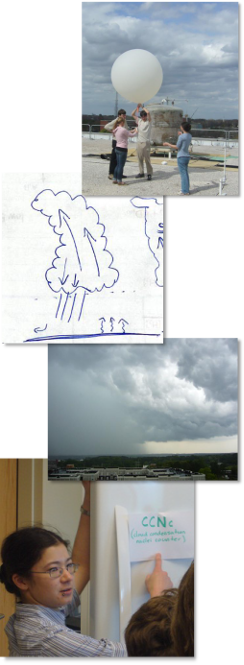Teaching context
Education
Certificate of Accomplishment in Teaching
2012, North Carolina State University, The Graduate School
Designing Effective Online Courses
2020, The University of North Carolina System, Digital Learning Initiative
Safe Zone Training
2020, The University of North Carolina at Chapel Hill, LGBTQ Center
Course descriptions
Research for Undergraduates is a technical elective offered in the chemical and environmental engineering curriculum. Students undertake directed research under faculty guidance and submit a written report at the end of the quarter.
Mass transfer is a third-year requirement for chemical and environmental engineering students and is part of the Transport Phenomena series. The outcomes include a solid fundamental understanding of mass transfer and the ability to solve complex engineering problems adaptively and independently. The course covers the fundamentals of molecular diffusion and convective mass transfer, diffusion coefficients, and boundary conditions. We spend time developing and applying calculus-based solutions for steady-state, time-dependent, and reactive mass transfer as well as thin films and transfer across phase interfaces in various geometries.
Aerosol thermodynamics and phase transitions is a tutorial presented to members of the American Association for Aerosol Research at the Annual Conference. Aerosol physical chemistry influences aerosol formation, growth, transport, heterogeneous reaction rates, and aerosol-cloud interactions. I cover chemical thermodynamics of aerosols, including theoretical development and important applications. The aerosol phase differs from that of bulk materials in a number of ways. For example, aerosol surface tension increases vapor pressure, increases internal pressure, suppresses liquid-liquid phase separation, and modulates viscosity. AAAR Tutorials Page
Atmospheric Thermodynamics is a second year requirement for Meteorology students that covers a mix of physical meteorology and thermodynamics. The course begins with the ideal gas law, entropy, and the laws of thermodynamics; then transitions to the application of these concepts to lapse rates in the atmosphere, the ascent of air parcels, and the condensation of liquid water; and finishes with stability, skew-T diagrams, convection, and lifting of air parcels. The course originally featured a computer programming requirement that I helped develop.
Introduction to Weather and Climate Lab is a problem session for students in non-science majors, and supplements a large-format lecture. This course introduces basic concepts in weather and climate including the properties of the atmosphere, climate systems, the causes and life cycles of thunderstorms, mid-latitude cyclones, and hurricanes, among other topics.
Mathematics Methods in Atmospheric Sciences Lab is a second year requirement for Meteorology students. This course provides a comprehensive review of vector calculus and introduces computer programming with MATLAB.
